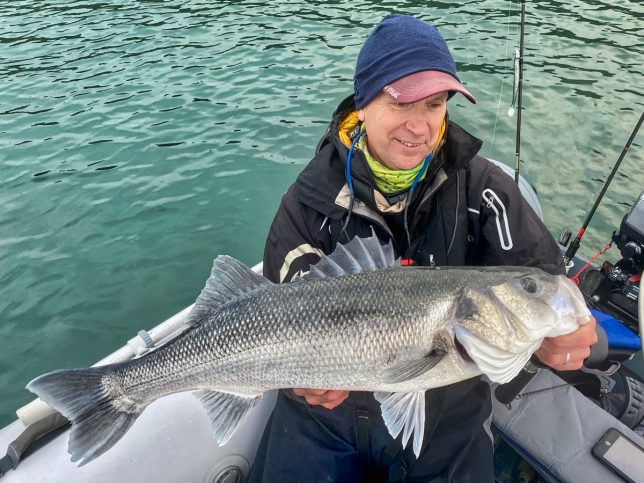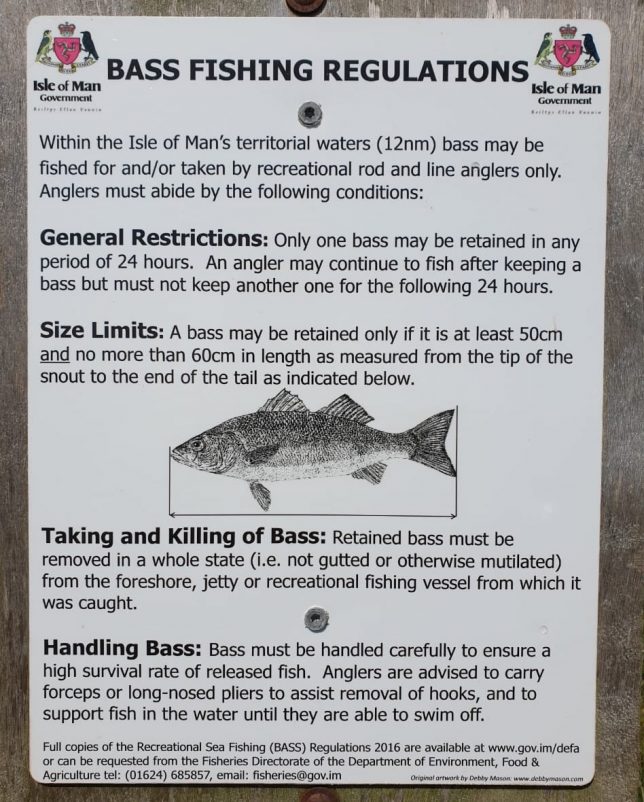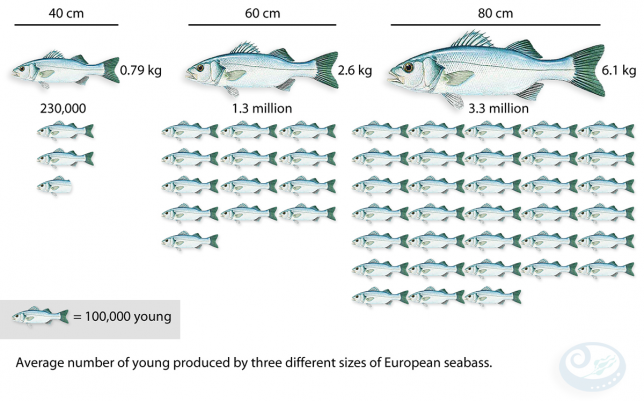The Bass Fishery Management Plan (BFMP) is very topical with stakeholder opinions being sought, so let’s take a look at one of the spawning stock misconceptions to look out for and what a suitable suggestion might be.

Size is everything
It’s noticeable that spawning-stock biomass is almost always regarded as being reproductively the same no matter what its size composition. Many small young females are wrongly assumed to contribute the same to stock productivity as an equivalent mass of what fisheries scientists call BOFFFFs (big old fat fecund female fish – which are large, older, female fish that are at the peak of their reproductive capacity). Consequently, BOFFFFs are harvested with no more regard than smaller, less productive fish. However, recent science shows that there are a number of ways in which BOFFFFs can be protected from exploitation and this in turn would improve the productivity and the stability of the stock.
Slot size and reserves
Two examples are slot limits and marine reserves. The Isle of Man is very much forward thinking in this regard and has a Legal Retention Slot for bass of 50-60cm already in place for its recreational fishery. This not only ensures that BOFFFFs are protected, it also ensures that any fish removed from the spawning stock biomass will have had the chance to spawn at least once, since a bass of 48cm is certain to be sexually mature for at least one breeding season. However, the current UK Minimum Conservation Reference Size of 42cm is not sufficient to ensure that harvested fish will have spawned. Establishing a carefully selected network of no-take marine reserves could help in two further distinct ways. Firstly, marine reserves provide a sanctuary and ensure that BOFFFFS survive throughout their natural geographic range, when the reserves are located correctly and are numerous enough. Secondly, marine reserves are known to “seed” surrounding areas by dispersal of young fish and of course, other marine organisms as well. Implementing both of these measures for bass would undoubtedly improve the spawning stock biomass (currently around 50% of the estimated levels of 1986) which would be advantageous for all stake holders in the bass fishery.

Supported by the science
The importance of large female fish within a stock biomass was first reported well over 100 years ago (Hjort 1914) but it is only relatively recently that scientists are starting to understand and fully appreciate how important such fish actually are.
In a great many fish species, including European bass, BOFFFFs produce more (Fig 1) and very often larger eggs compared to smaller but mature sized fish and once hatched, the offspring of BOFFFFs frequently display faster growth and better survival rates.

As can be seen above, a European bass that is 80cm in length produces nearly three times as many eggs as a fish just 20cm shorter and over seven times as many as a fish of 40cm. Moreover, BOFFFFs have a tendency towards an earlier and longer spawning season and since large fish are more robust than smaller fish, BOFFFFs can also spawn in locations that smaller fish can’t. Thus, BOFFFFs help to ensure individual reproductive success in environments that other fish may not be able to reproduce in. Similarly, BOFFFFs can survive periods that aren’t conducive to successful reproduction and in doing so, enhance recruitment when conditions return to normal. This is termed “the storage effect”. It is also known that removing BOFFFFs, by using non-selective fishing methods for example, destabilizes fished populations and increases susceptibility of collapse even after fishing effort is later reduced, further illustrating BOFFFF importance to populations. So, one can see why it is critically important that as many BOFFFFs remain part of the spawning-stock biomass as possible in order to maximise recruitment.
A Bass Fishery Management Plan would do well to take into account that BOFFFFs are an important element of the stock biomass that can benefit bass anglers and all fishers alike.
References:
Hixon et al, ICES Journal of Marine Science, Volume 71, Issue 8, October 2014, Pages 2171–2185
Lavin et al, Proc Biol Sci. 2021 Mar 10;288
* ICES/CIEM advice on sea bass for areas North Sea, English Channel, Irish Sea, Bristol Channel, Celtic Sea 2021.
Photo credits: Julian Fox with a BOFFFF, Matt Spence. Isle of Man Regulations, Nigel Fairclough.